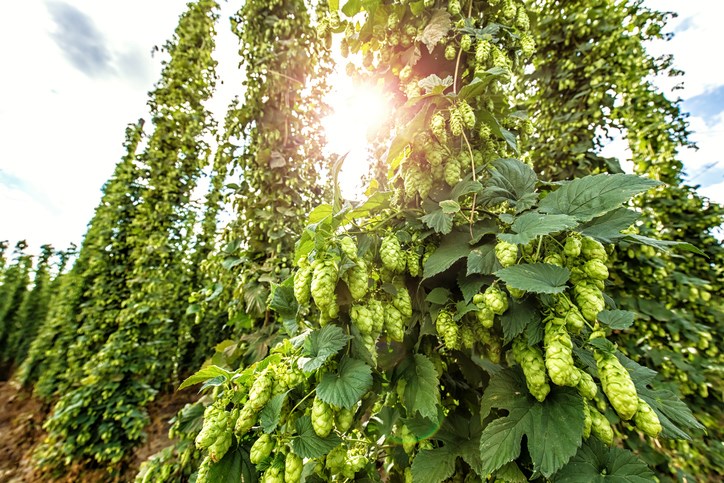When most folks think of hops, they think bitterness. What comes to mind are the bitter hops used in classic northwest IPAs; hops like Columbia and Centennial that emphasize the bitter profiles and can include floral, piney, herbal, and spicy notes. Not everyone enjoys the bold, bitter flavour, and that’s legit. But hops are in every beer, so to say you don’t like hops but you like beer is fundamentally inaccurate. It would be more apt to say that you don’t like bitter hops. Over the last year or so, many breweries have pivoted from heavily featuring bitter hops in their IPAs to using juicy, citrusy hops. Citra, Azacca, Galaxy, El Dorado, and Amarillo are examples of hops with juicy notes that can include mango, nectarine, melon, and pineapple profiles. Basically, this new guard of hops taste tropical AF.
So to understand hops better, let’s start with alpha and beta acids. These acids are responsible for the bitterness of the beer and also much of the aroma. Hop suppliers test for alpha and beta acids to determine what percentage of the hops’ weight each acid makes up. Brewers apply that data to get a better sense of what a certain hop will do in their brew.
There are five types of alpha acids, but the ones to note are called humulone and cohumulone. Humulone acids bring out gentler bitterness, like that in Citra hops. Citra hops can measure high in alpha acids but don’t have that classic bitter flavour because the humulone percentage is relatively high. Cohumulone is responsible for harsher bitterness and is about twice as potent than humulone acids.
Ultimately when beers are measured for International Bittering Units (IBUs), these acids are what are being tested. Therefore a juicy IPA with a melony profile could end up with similar readings to a classically bitter IPA with a pine and herbal profile – if all else is constant. Juicy IPA recipes are crafted to balance the perceived bitterness with the perceived sweetness in order to highlight the less bitter flavours of the beer. Everything from the yeast, malt, and hops factor in to these perceived tastes.
The timing of when the hops are added to the beer is significant as well. Hops used during the boil will release alpha acids and highlight bitter notes while hops used to dry hop (added during a later fermentation stage) will add to the aroma of the beer.
Beta acids break down over time and will change the taste profile of a beer. This is why it’s best to drink IPAs as fresh as possible, since the full, desired taste profile is evident within the first number of weeks. You may not notice these changes in taste profiles of lagers and pilsners, by comparison, because lagering slows down the process of beta acids breaking down.
In the last couple of years, a trend of single-hopped beers has emerged that really showcases what each hop tastes like. Big Rock has Citradelic Single Hop Citra IPA, Brassneck has an IPA with Mosaic hops called One Trick Pony and Strange Fellows has a single hop IPA series called Cyclhops that features a new hop every time it’s brewed.
Hop farmers are getting more playful with their delivery methods as well. “Hop hash” is a new product hop farmers like Chilliwack Hop Farms are making and breweries are experimenting with. If you haven’t figured it out from the name (or are new to BC), hop hash is a condensed version of a hop, just like marijuana bud can be condensed into marijuana hash. Faculty Brewing Co. made a white IPA with Amarillo and Mosaic hop hash from Chilliwack Hop Farms, while Big Rock celebrated 420 this year with a hemp infused hop hash that Chilliwack custom-made for the brew.
So, the next time you walk into a brewery, don’t discount the IPA because you assume it will be too bitter. Be sure to ask staff about the beer’s profile to ensure you are not missing out of a tasty brew.



